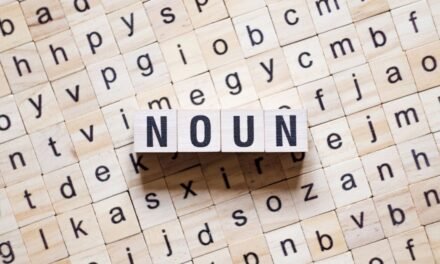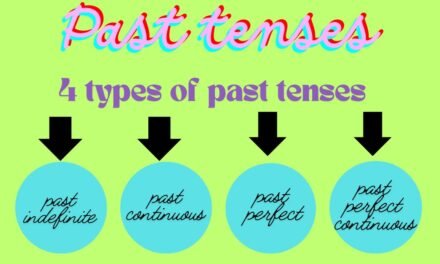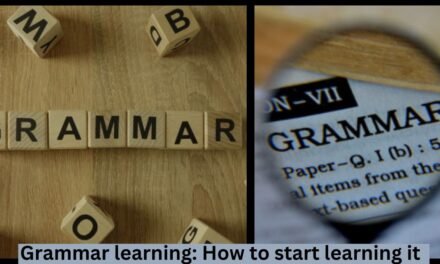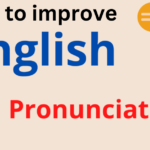Tenses and their types
Have you ever wondered how we express when things happen in our language? The magic lies in tenses, the building blocks that tell us whether an action is happening now happened in the past, or will happen in the future. Understanding tenses and their types is like having a time machine for your words. Imagine describing a delicious meal you just ate (past tense) or planning an exciting trip you’ll take soon (future tense).
Tenses allow you to navigate the vast spectrum of time with precision, ensuring your message is clear and paints a vivid picture for the listener. This guide will unveil the secrets of tenses and their types, empowering you to become a master of crafting sentences that transcend the boundaries of time.
Definition of tenses with examples
Tenses are like time indicators for verbs, telling us when an action or state happens. Here are 10 sentences with different tenses:
- Present Simple: She drinks coffee every morning. (habitual action)
- Simple Past: I watched a movie last night. (completed action in the past)
- Present Continuous: They are playing outside right now. (action happening now)
- Simple Future: We will travel to Europe next year. (future action)
- Present Perfect: I have eaten breakfast already. (action completed with connection to present)
- Past Perfect: By the time he arrived, the meeting had already started. (action completed before another past action)
- Present Perfect Continuous: She has been working on her project for hours. (an action that began in the past and continues up to the present)
- Past Perfect Continuous: They had been studying for weeks before the exam. (an action that began in the past, continued for a while, and ended before another past event)
- Future Continuous: We will be working on the report tomorrow afternoon. (an action that will be ongoing at a specific point in the future)
- Future Perfect: She will have finished her homework by the time you arrive. (an action that will be completed before another future event)
The Three Pillars of Time: Past, Present, and Future
The foundation of tenses lies in the three main timeframes: past, present, and future. Verbs, the workhorses of a sentence, take on different forms depending on when the action or state being described takes place.
- Past: The past refers to events or states that have already happened.
- Present: The present signifies actions or states that are happening now or are habitually true.
- Future: The future indicates events or states that have not yet occurred.
Unveiling the Nuances: Types of Tenses
Within these three broad timeframes, English grammar offers a rich tapestry of tenses, each with a specific purpose. Let’s delve deeper into the four main types of tenses used in each timeframe:
1. Simple Tenses
Simple tenses express actions or states in a straightforward manner, focusing on their completion or ongoing nature.
- Simple Present: The simple present describes habits, general truths, and events that occur repeatedly. (e.g., The sun rises in the east. She drinks coffee every morning.)
- Simple Past: The simple past depicts completed actions or states at a specific point in the past. (e.g., I ate dinner last night. We visited the museum yesterday.)
- Simple Future: The simple future indicates actions or states that will occur at some point in the future. (e.g., They will travel to Europe next summer. The meeting starts at 10 AM.)
2. Continuous Tenses
Continuous tenses emphasize the ongoing nature of an action or state, highlighting its duration rather than its completion.
- Present Continuous: The present continuous describes actions happening at the moment of speaking or around that time. (e.g., She is cooking dinner. We are having a meeting.)
- Past Continuous: The past continuous portrays actions that were in progress at a specific point in the past. (e.g., I was working when you called. They were playing football in the park.)
- Future Continuous: The future continuous indicates actions that will be ongoing at a specific point in the future. (e.g., We will be working on the project tomorrow at noon. She will be traveling for a month.)
3. Perfect Tenses
Perfect tenses focus on the completion of an action and its connection to the present time. They combine the auxiliary verb “have” with the past participle of the main verb.
- Present Perfect: The present perfect describes actions that happened at an unspecified time in the past but have a connection to the present. (e.g., I have eaten lunch. She has finished her homework.)
- Past Perfect: The past perfect emphasizes an action that was completed before another past action. (e.g., By the time I arrived, they had already left. She had been working for two hours before taking a break.)
4. Perfect Continuous Tenses
Perfect continuous tenses combine the concept of duration with completion, highlighting actions that began in the past, continued for a period, and were completed at some point before the present.
- Present Perfect Continuous: The present perfect continuous emphasizes the duration of an action that started in the past and continues up to the present, possibly with ongoing effects. (e.g., I have been working on this project for weeks. They have been living here for ten years.)
- Past Perfect Continuous: The past perfect continuous depicts an action that began in the past, continued for a while, and ended before another past event. (e.g., She had been studying for hours before the exam. They had been living apart for months before the divorce.)
Mastering the Art: Choosing the Right Tense
Understanding the different tenses empowers you to craft clear and concise sentences. Here are some key pointers to guide you:
- Simple Present: Use the simple present for habitual actions, general truths, and events that occur repeatedly.
- Simple Past: Opt for the simple past to describe completed actions or states at a specific point in the past.
- Simple Future: Employ the simple future to indicate actions or states that will take place at some point in the future.
- Present Continuous: Choose the present continuous for actions that are happening
The Importance of Tenses: Crafting Clarity and Precision in Communication
Tenses are not merely grammatical niceties; they are the cornerstones of clear and precise communication. By understanding and using tenses effectively, we elevate our ability to express ourselves with accuracy and paint a vivid picture of time within our sentences. Here’s why tenses hold such significance:
Accuracy in Time Representation:
Tenses ensure that our message conveys the exact timeframe of actions and states. They differentiate between events that have already happened (past), are happening now (present), or will happen in the future. Imagine saying “I went to the store” versus “I am going to the store.” The tenses instantly convey the difference between a completed errand and a future one.
Clear Sequencing of Events:
Tenses allow us to establish a timeline within our sentences. Using the correct tenses helps listeners or readers understand the order in which events unfold. For instance, the sentence “She cooked dinner after she finished work” (past perfect tense followed by simple past tense) clarifies the sequence compared to “She cooked dinner and finished work” (simple past tense used twice), which leaves the order ambiguous.
Establishing Relationships Between Events:
Tenses can depict the relationship between different actions or states. The past perfect tense, for example, shows an action completed before another past action. Saying “By the time I arrived, the train had already left” (past perfect followed by simple past) clarifies that the train’s departure happened before your arrival.
Expressing Different Meanings:
The same verb used with different tenses can convey entirely different meanings. Consider the sentence “She teaches English.” (simple present tense) This implies an ongoing profession. However, “She taught English” (simple past tense) indicates a completed action in the past, possibly no longer relevant.
Maintaining Coherence and Flow:
Proper tense usage ensures a smooth flow of information in your writing or speech. Inconsistent tenses can create confusion and disrupt the logical progression of your message. Imagine a news report that switches between past and present tense when describing a developing event. This inconsistency would make it difficult to follow the timeline of the story.
Conclusion
In conclusion, tenses and their types are the secret sauce for clear and impactful communication. Understanding these time indicators empowers you to express yourself with precision, navigate the vast spectrum of time, and paint a vivid picture with your words. Whether you’re describing a past adventure (past tense), planning a future trip (future tense), or sharing a habit (present tense), tenses ensure your message is clear and well-understood.
If you want to improve vocabulary, grammar, and tips to speak, listen, read, and write in English click the link and read in detail!
By mastering tenses and their types, you unlock the ability to craft sentences that transcend the boundaries of time and leave a lasting impression on your audience. Remember, using tenses correctly is like having a personal time machine for your verbs – you can take your listeners or readers on a journey through the past, present, and future with ease. So, delve into the world of tenses and their types, and unlock the power of expressing yourself across the vast canvas of time!










Nice post. I learn something more challenging on different blogs everyday. It will always be stimulating to read content from other writers and practice a little something from their store. I’d prefer to use some with the content on my blog whether you don’t mind. Natually I’ll give you a link on your web blog. Thanks for sharing.
Nice post. I was checking continuously this blog and I am impressed! Very helpful information specially the last part 🙂 I care for such information a lot. I was looking for this certain info for a long time. Thank you and best of luck.
hello there and thank you for your info – I have certainly picked up something new from right here. I did however expertise several technical issues using this website, since I experienced to reload the site a lot of times previous to I could get it to load correctly. I had been wondering if your web host is OK? Not that I am complaining, but slow loading instances times will sometimes affect your placement in google and could damage your high quality score if advertising and marketing with Adwords. Well I’m adding this RSS to my e-mail and can look out for much more of your respective fascinating content. Ensure that you update this again soon..
Thank you for sharing with us, I think this website really stands out : D.